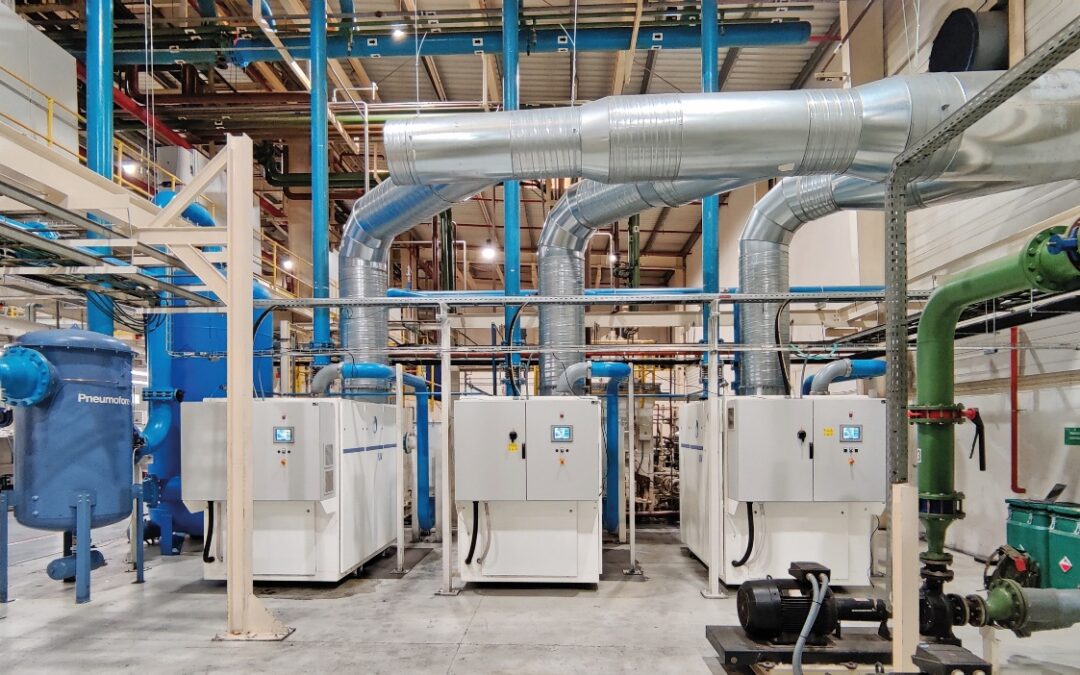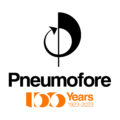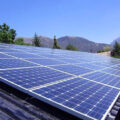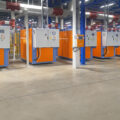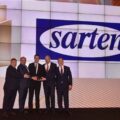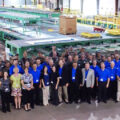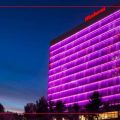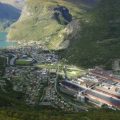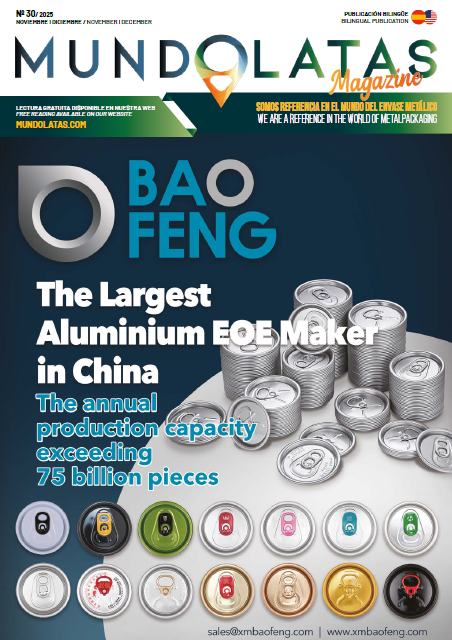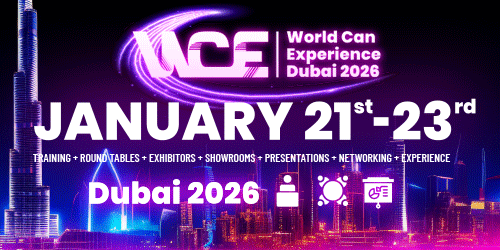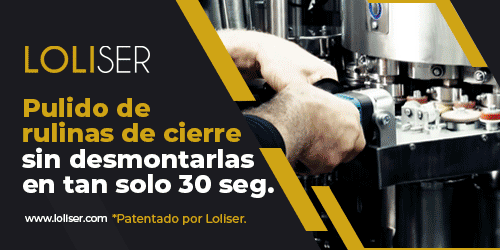In line with its commitment to energy efficiency and sustainability, Crown BevCan España has successfully implemented a heat recovery retrofit on three large vacuum pumps at its Seville plant. Despite the complexity and cost of the upgrade, the system achieved a full return on investment in just 15 months, well ahead of projections.
In 2020, Crown BevCan España installed three Pneumofore UV50 VS90 vacuum pumps—air-cooled units specifically selected for their suitability to the Spanish climate. These three pumps, with a total installed power of 270 kW, replaced five screw pumps with a total rated power of 375 kW, reducing the installed rated power by 28%. While this standard configuration met the goal of reducing electricity consumption, the company’s evolving sustainability goals soon put energy efficiency even more in the forefront.
Vacuum pumps and air compressors inherently dissipate most of the electrical energy absorbed in the form of heat, a principle based on thermodynamics and fluid dynamics. While compressors typically generate more heat due to higher energy consumption, vacuum pumps still represent a substantial opportunity for energy recovery. Therefore, retrofitting existing vacuum systems to enable heat recovery offers a high-impact and cost-effective sustainability upgrade.
In recent years, there has been a notable shift in can plant management, with an increased presence of sustainability managers and engineering graduates trained in environmental efficiency. These professionals actively assess baseline consumption and identify opportunities for improvement based on metrics such as energy savings, emission reductions, and return on investment (ROI) of new equipment or retrofits, as shown here.
In this project, the retrofit was designed to recover waste heat by upgrading the original oil/air cooling configuration to a combined oil/air and oil/water system. The heat exchanger operated under the following conditions: incoming water at 26°C and outgoing water at 41°C. All retrofit kits were prepared by Pneumofore in advance and shipped before the technician’s scheduled visit to minimize downtime and ensure a smooth installation.
Installed in 2022, the retrofit included a comprehensive set of safety features to handle contingencies such as power failures, cooling water interruption, and system overheating. Despite the complexity, the three UV50 units—only two years old at the time—were successfully retrofitted, one at a time.
Initial ROI estimates suggested a two-year payback period, considering equipment, labor, and installation costs. However, post-installation assessments conducted by the customer revealed that the investment was recovered in just 15 months, exceeding all expectations. The recovered thermal energy, generated through continuous 24/7 operation, provided measurable and sustained savings, while improving overall plant efficiency.
This successful retrofit demonstrates not only the technical feasibility of integrating heat recovery into existing vacuum systems, but also its strong financial viability. With hundreds of UV50 units in service in two-piece can manufacturing plants worldwide, Pneumofore continues to lead the industry in durable and energy-efficient vacuum solutions. Many new installations now include heat recovery from the start, but this case exemplifies the effectiveness of retrofit as a path to immediate environmental and economic gains.

